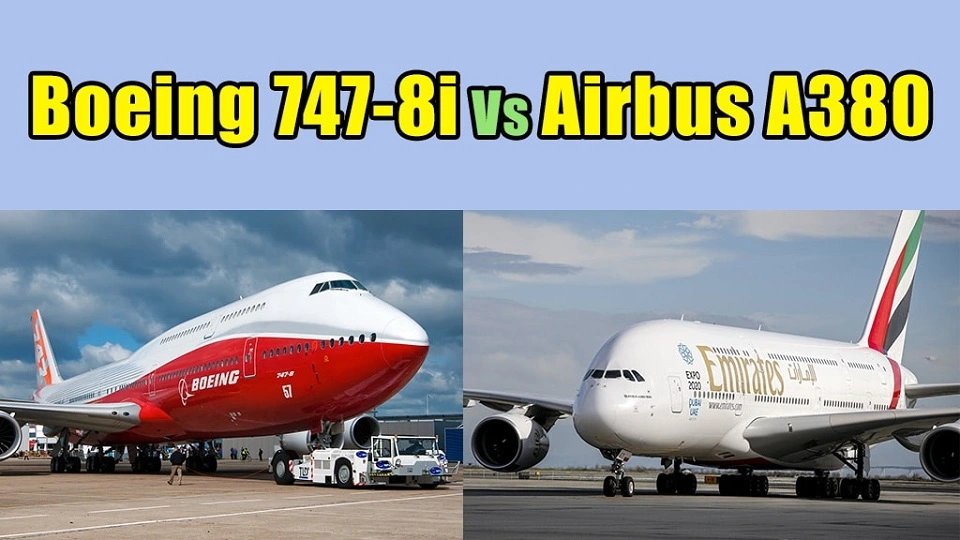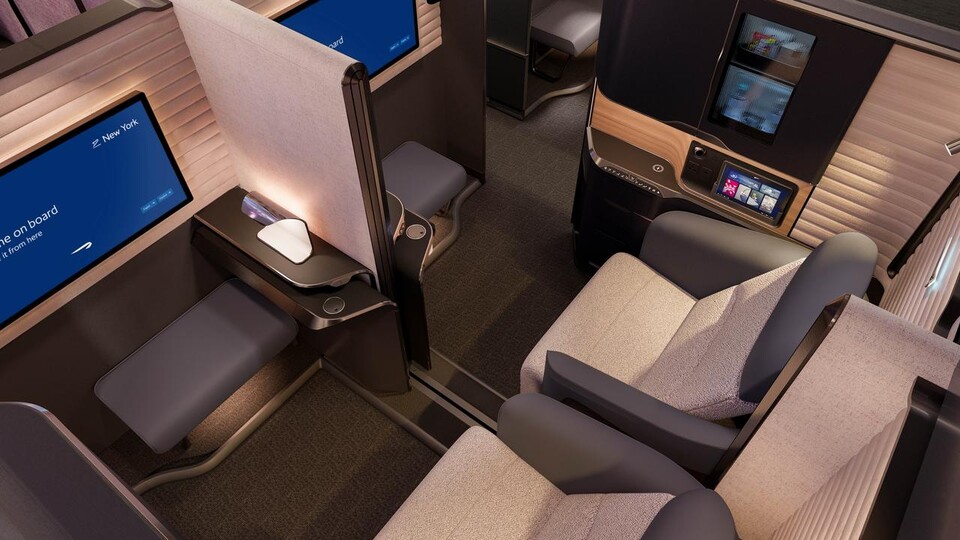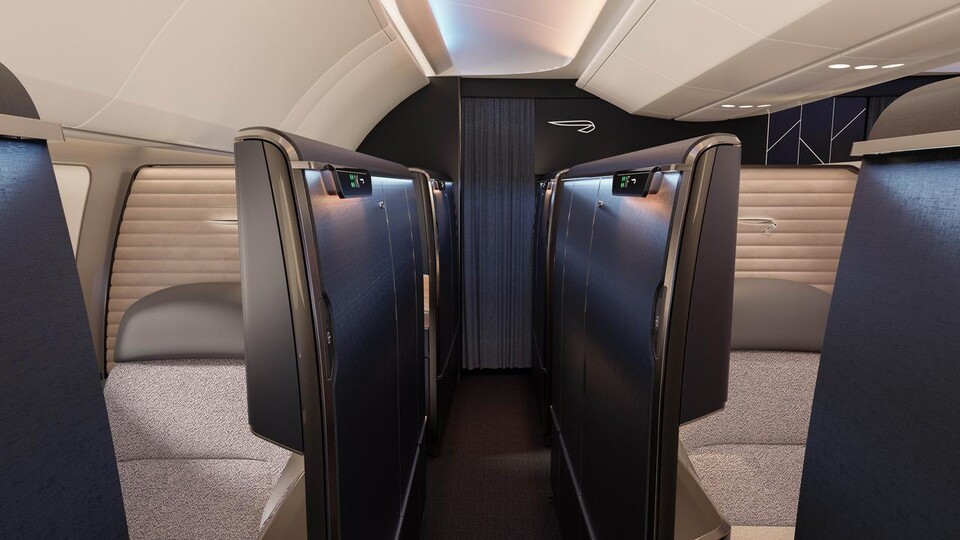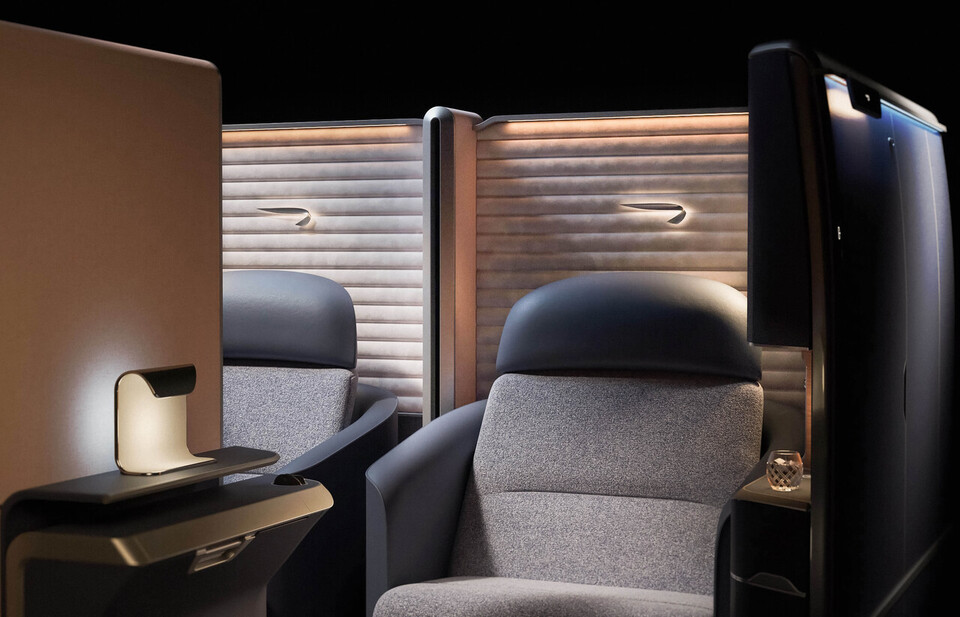Airlines
Boeing 747-8i vs Airbus A380 a Comparisons of two Legends

End of Queen of the Skies production, Boeing 747
Comparison between Boeing 747-8i and Airbus A380
The Boeing 747-8 represents the final iteration of the renowned Boeing 747 family, serving as Boeing Commercial Airplanes’ largest aircraft. Following the introduction of the 747-400, Boeing explored larger variants as potential competitors to the proposed double-deck Airbus A3XX, later developed into the Airbus A380.
Conversely, the Airbus A380 stands as a colossal wide-body airliner developed and manufactured by Airbus. It holds the distinction of being the world’s largest passenger airliner, featuring a full-length double-deck design. Airbus initiated studies for the A380 in 1988, formally announcing the project in 1990 to challenge the Boeing 747’s dominance in the long-haul market.
Qantas Airways Airbus A380 returns to the skies
Boeing 747-8 and the Airbus A380-800 stand as titans in the world of commercial aviation, Let’s delve into detailed comparison and features side by side.
Engines:
Boeing 747-8 is Powered by 4x General Electric GEnx 2B67 turbofan engines, delivering 66,500 pound-force of thrust. On the other hand, Airbus A380-800 is Propelled by either 4x Engine Alliance GP7270 or Rolls-Royce Trent 900 turbofan engines, generating an impressive 81,500 pound-force of thrust.
Performance and Specifications:
When it comes to price, the Boeing 747-8 boasts a price tag of $418.4 million, slightly lower than the Airbus A380-800’s $445.6 million.
In terms of avionics, the Boeing 747-8 is equipped with Rockwell Collins Avionics, while the Airbus A380-800 utilizes Thales Rockwell Honeywell Combo technology.
Speed and Efficiency:
While cruising, the Boeing 747-8 achieves a maximum speed of 533 knots (987 km/h), slightly slower than the Airbus A380-800’s 587 knots (1,087 km/h).
However, the Boeing 747-8 demonstrates superior fuel economy, covering 0.12 nautical miles per gallon (0.059 kilometers per liter) compared to the A380’s 0.1 nautical miles per gallon (0.049 kilometers per liter).
Capacity and Range:
In terms of passenger capacity, the Airbus A380-800 leads with a staggering 853 seats, while the Boeing 747-8 accommodates 467 passengers.
However, both aircraft offer a similar travel range of 8,000 nautical miles (14,816 kilometers), making them ideal for long-haul flights.
Performance Metrics:
In terms of performance, the Boeing 747-8 achieves a maximum cruise speed of 533 knots (987 km/h), with an approach speed of 145 knots.
Airbus A380-800 attains a maximum cruise speed of 587 knots (1,087 km/h), with a slightly lower approach speed of 135 knots.
Size and Dimensions:
In terms of dimensions, the Airbus A380-800 surpasses the Boeing 747-8 in several aspects. It boasts a larger cabin height of 3 meters (9.84 feet). However, the Boeing 747-8 maintains its distinction with a taller tail height of 19.51 meters (64.01 feet).
Boeing 747-8I has a length of approximately 76.25 meters (250 feet).With a wingspan of 68.4 meters (224.41 feet). Airbus A380 boasts impressive dimensions, with a length of approximately 72.72 meters (238 feet) and a wingspan spanning a remarkable 79.75 meters (261 feet).

Airlines
British Airways Unveils Its Brand-New First Class Cabin for the Airbus A380

British Airways has introduced its brand-new First Class seat, blending sleek design with expert British craftsmanship. Reflecting modern British luxury travel, this new cabin is part of the airline’s Airbus A380 retrofit plans, set to take flight in mid-2026.
The updated First Class cabin has been crafted to feel like a modern luxury hotel in the sky, complete with cozy touches and thoughtful British details.
Etihad Airways Unveils 10 Exciting New Routes for 2025
Designed by top experts from across Great Britain and Ireland—including London, Glasgow, West Yorkshire, Kilkeel, and Dublin—the seat reflects the best of British design and quality.
Features and Comforts
The new First Class seat is ultra-wide at 36.5 inches, with a bed length of 79 inches for ultimate comfort. It includes:
- A multi-purpose ottoman and stowable table.
- A 32-inch 4K TV screen.
- Adjustable mood lighting with modes like “relax,” “dine,” and “cinema.”
- A cocooned 60-inch curved wall for privacy while maintaining a spacious feel.
Passengers traveling together can enjoy a shared experience with a sliding divider that creates a lounge-like space. The stowable tables also allow for “buddy dining,” where two people can dine together.
The cabin’s flowing curves, inspired by the iconic Concorde wings, create a welcoming and stylish environment. Additionally, passengers can now wheel their luggage directly into their personal storage space, making settling in easier.
This country tops visa rejections in the popular Schengen countries
British Airways carefully considered customer feedback when designing this cabin. The seat includes practical storage and features like a fully rectangular bed for home-like comfort. Every detail, from usability to elegance, has been designed to enhance the travel experience.
British Airways is proud to be the only UK-based European airline offering a First Class product across the Atlantic. british airways premium economy and First Class travelers enjoy exclusive perks such as stylish seats, access to luxury lounges, fast-track security, and the First Wing at Heathrow. The airline ensures a premium experience from booking to landing.
This cabin upgrade is part of British Airways’ £7 billion investment in improving customer experiences. The airline has already introduced over 120 initiatives, including new short-haul seats, free onboard Wi-Fi messaging, and refreshed lounges worldwide.
-

 Aviation2 months ago
Aviation2 months agoMicrosoft Flight Simulator Raises $3 Million to Bring Back the An-225 Mriya
-

 Airlines2 months ago
Airlines2 months agoQatar Citizens Can Travel to the United States Without a Visa
-

 Aviation2 months ago
Aviation2 months agoQatar Airways bans these new Electronic Devices on plane
-

 Airlines2 months ago
Airlines2 months agoJapan Airlines Rolls Out Free Domestic Flights to International Passengers
-

 Travel2 months ago
Travel2 months agoQatar Airways Launches Four Additional Flights from Amsterdam
-

 Defence2 months ago
Defence2 months agoWhich Country Has the Largest Fleet of Fighter Aircraft?
-

 Airport2 months ago
Airport2 months agoWestern Sydney Airport Welcomes Its First Plane After 6 Years of construction
-

 Airlines4 days ago
Airlines4 days agoDAMAC Air: Dubai’s New Luxury Airline Offers Free Flights for Registration










